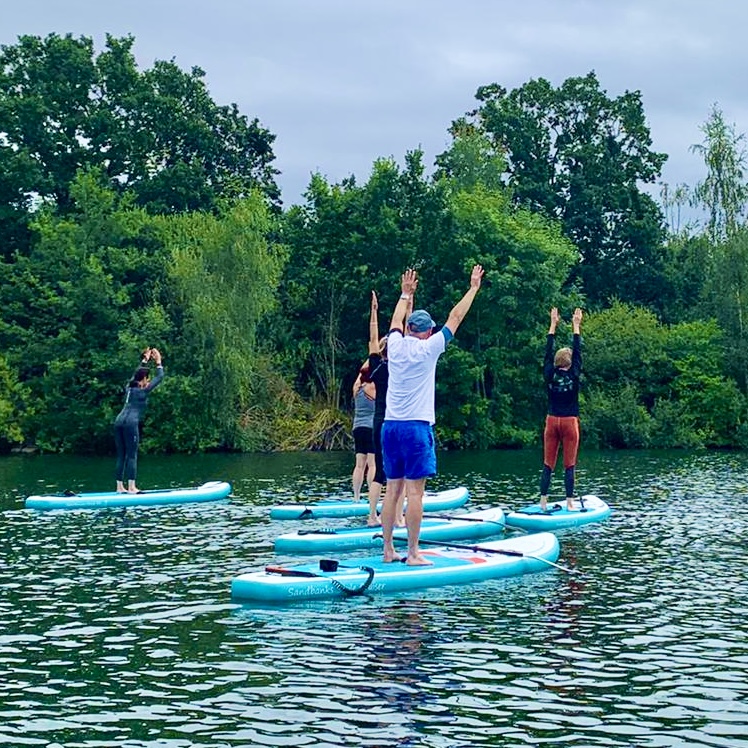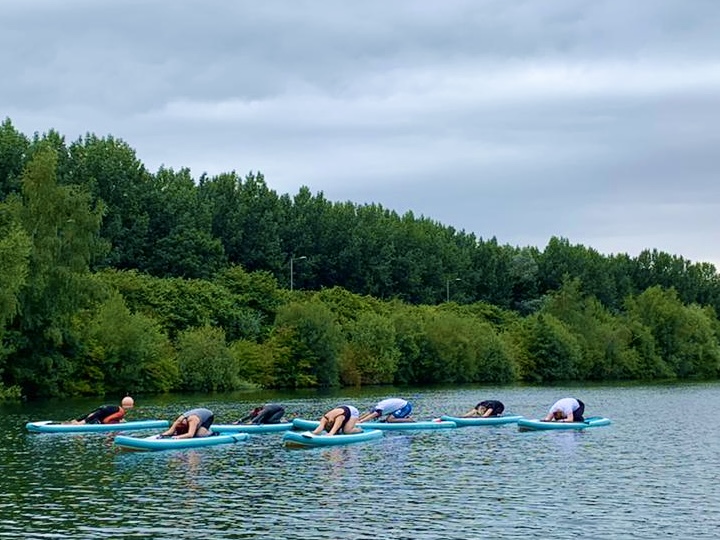The SUP Yoga session I lead was recently advertised on Facebook and it was fascinating to see the response. Lots of people were convinced that they needed excellent balance or they would spend all their time falling in the water with one imagining yogi’s tumbling like a ‘set of dominoes.’
When I remember the first time that I hired a SUP board in France and tried to practice yoga on it, I immediately attempted ‘Tree pose’ and ‘Warrior 2’ and spent as much time in the water as on the board. These were probably not the best poses to begin with.
The reality is that an sup yoga session will develop the group’s balance during the session and the teacher will decide during the session, especially if it’s a new group, how challenging to make the practice.
Many yoga sessions will begin with some breathing practice in a stationery position before leading to bringing some small movements into harmony with your breathing. My class begins with participants lying in ‘Shavasana’, moving to a seated position and then into ‘tabletop’ for these elements in the class.
Balances are a key element of yoga and on a paddleboard, there is a considerable challenge in these without trying to stand on one leg. Instead a range of balances can be practiced when on all fours.
Standing on a board can be tricky for many people and when you first learn paddle boarding, the instructor may work on paddling in a kneeling position. The same is true for SUP yoga in that rather than moving to standing, there are many asanas and flows that can be modified to take place when kneeling such as a modified sun salutation or moving through different Warrior positions.

It is once you have done these sections, that an instructor will decide how much practice to complete in a standing position and whether to move into a more traditional sun salutation.
The final element of an SUP yoga class is likely to be a relaxation and as we head into this final ‘shavasana’, there is a good opportunity to move through some poses in a prone position. Relaxation is a lovely moment in the class with your fingers just dipping in the water, the sun making patterns on the lids of your closed eyes coupled with the gentle rocking motion of the board.
I hope this gives you some idea of what a SUP yoga class may consist of and hopefully provides more confidence for you to sign up to your first class.
Namaste
Further articles:



